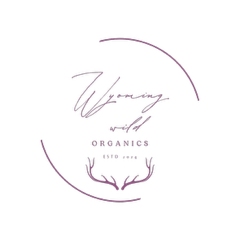
Echinacea and Your Health: How This Herb Boosts Immunity and Fights Illness
What Exactly Is Echinacea?
I have a handful of herbs I reach for more often than others, and one of my favorites is Echinacea. Despite the tricky spelling, it’s a powerhouse herb with a wide range of uses. I always make sure to keep it on hand in various forms—whether as a supplement, dried, tincture, or even as live plants in my home. Echinacea’s versatility makes it a must-have, whether you need a quick immune boost or want to add it to your daily routine for ongoing support.
Echinacea is a perennial herb from the daisy family, more commonly known as the purple coneflower. It features a tall, slender stem with a single, prominent flower that has a central cone surrounded by vibrant purple or pink petals. Echinacea thrives in moist to dry prairies and open wooded areas. The harvest season for this herb is in autumn—roots when mature, flowers at full bloom, and seeds once the heads have dried but not yet fallen.
Why Echinacea Is a Game-Changer for Your Health
Echinacea is renowned for its ability to boost immunity, making it a popular choice during cold and flu season. Studies suggest that it may reduce the severity of symptoms or even shorten the duration of illness. Taking Echinacea as a supplement can gradually enhance your immune defenses over time. But if you’re feeling run down or exposed to illness, it can also provide that extra defense to help you fight back more effectively.
In addition to immune support, Echinacea has anti-inflammatory properties that can help with conditions like respiratory issues, urinary tract infections (UTIs), and even chronic pain related to arthritis. Its ability to reduce inflammation is especially beneficial in managing conditions linked to autoimmune diseases, where inflammation is often the root cause of many symptoms. Plus, it offers antioxidant benefits, helping to protect your cells from oxidative stress and support overall well-being.

How to Make the Most of Echinacea in Your Routine
Echinacea comes in various forms, and each method of consumption has its own benefits. The right option depends on your personal preferences. However, keep in mind that it's best to use Echinacea for short periods to avoid over stimulating the immune system.
Tea:
Echinacea is often used in tea form during cold and flu season for immune support. A typical starting dose is one to two grams per cup of water. Drink one to two cups per day for a few weeks, either before or during cold and flu season, when traveling, or when you're around more people than usual.
Capsules/Tablets:
Echinacea capsules usually contain 300mg to 500mg per capsule. The general recommendation is to take one to three capsules per day, depending on the concentration. Follow the product’s directions for specific dosage information.
Your Echinacea Experience
Echinacea is more than just a pretty flower—it’s a powerful herb with a wide range of health benefits, from boosting your immune system to reducing inflammation and promoting overall wellness. Whether you choose to drink it as a soothing tea, take it in capsule form, or incorporate it into your daily routine, Echinacea is a versatile ally, especially during cold and flu season.
While it’s generally safe for most people, as with any supplement, it’s important to listen to your body and consult with a healthcare provider, particularly if you have underlying health conditions or are on medications. By adding Echinacea to your wellness arsenal, you can support your body’s natural defenses and promote better health year-round.
Have you used Echinacea before, or are you thinking of giving it a try? I’d love to hear your thoughts and experiences—drop a comment below and let me know. If you found this post helpful, feel free to share it with friends or family who might benefit from learning more about this amazing herb. Sharing knowledge is the best way to support each other’s health journeys!
